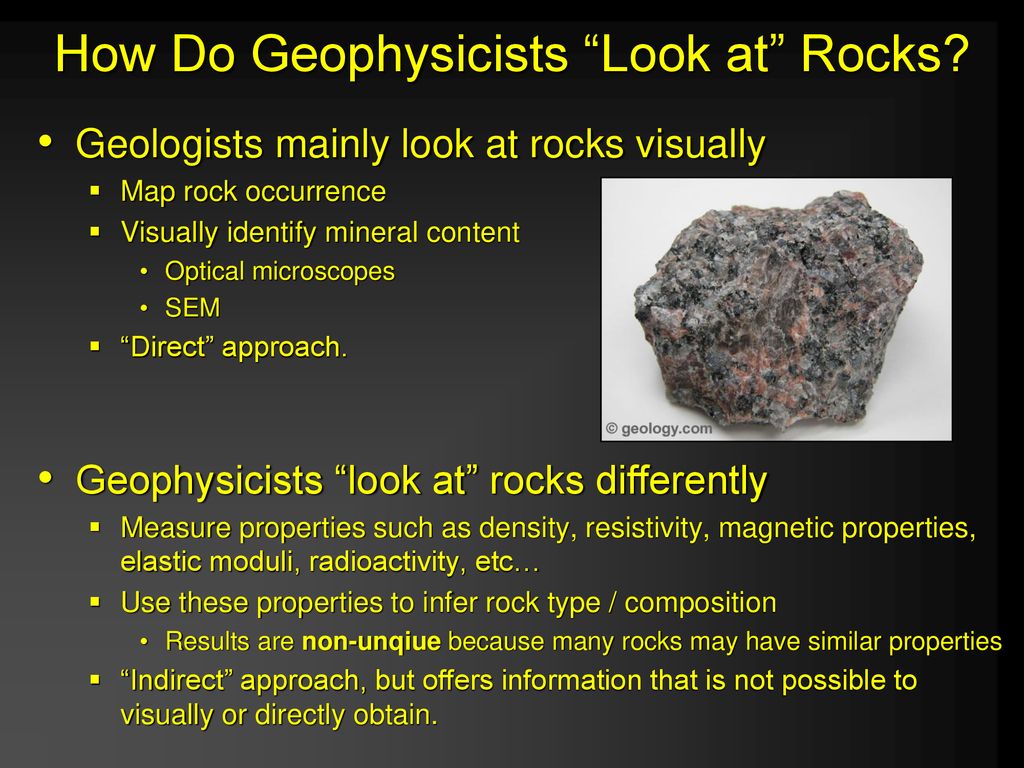All Categories
Featured
Table of Contents
Hydrographic And Geophysical Surveys in Hovea Oz 2021

The primary design for the radial structure of the interior of the Earth is the initial recommendation Earth design (PREM). Some parts of this design have been updated by recent findings in mineral physics (see post-perovskite) and supplemented by seismic tomography. The mantle is primarily composed of silicates, and the limits in between layers of the mantle are constant with phase shifts.

This makes plate tectonics possible. Schematic of Earth's magnetosphere. The solar wind circulations from delegated right. If a planet's electromagnetic field is strong enough, its interaction with the solar wind forms a magnetosphere. Early area probes mapped out the gross dimensions of the Earth's electromagnetic field, which extends about 10 Earth radii towards the Sun.
Inside the magnetosphere, there are reasonably thick areas of solar wind particles called the Van Allen radiation belts. Geophysical measurements are usually at a specific time and location. Accurate measurements of position, together with earth deformation and gravity, are the province of geodesy. While geodesy and geophysics are separate fields, the two are so closely linked that many scientific organizations such as the American Geophysical Union, the Canadian Geophysical Union and the International Union of Geodesy and Geophysics encompass both.
Geophysical Survey - Salisbury Archaeology in Darling Downs WA 2023
A three-dimensional position is computed utilizing messages from 4 or more noticeable satellites and described the 1980 Geodetic Reference System. An alternative, optical astronomy, combines astronomical collaborates and the regional gravity vector to get geodetic coordinates. This method just provides the position in two collaborates and is more difficult to use than GPS.
Relative positions of 2 or more points can be figured out utilizing very-long-baseline interferometry. Gravity measurements entered into geodesy because they were needed to associated measurements at the surface of the Earth to the recommendation coordinate system. Gravity measurements on land can be used gravimeters released either on the surface or in helicopter flyovers.
, which are studied through geophysics and space physics.
Marine Geophysicist in Leederville Aus 2022

Given that geophysics is worried with the shape of the Earth, and by extension the mapping of features around and in the planet, geophysical measurements include high precision GPS measurements. These measurements are processed to increase their accuracy through differential GPS processing. Once the geophysical measurements have actually been processed and inverted, the translated outcomes are outlined using GIS.
Lots of geophysics business have designed internal geophysics programs that pre-date Arc, GIS and Geo, Soft in order to fulfill the visualization requirements of a geophysical dataset. Exploration geophysics is used geophysics that typically utilizes remote sensing platforms such as; satellites, airplane, ships, boats, rovers, drones, borehole sensing devices, and seismic receivers.
Aeromagnetic data (airplane gathered magnetic information) collected utilizing traditional fixed-wing airplane platforms must be fixed for electro-magnetic eddy currents that are developed as the aircraft moves through Earth's magnetic field. There are also corrections connected to changes in measured prospective field strength as the Earth rotates, as the Earth orbits the Sun, and as the moon orbits the Earth.
Geophysical Survey Next Step In Carbon Storage Study in Spearwood Aus 2023
Signal processing includes the correction of time-series information for unwanted sound or errors introduced by the measurement platform, such as airplane vibrations in gravity data. It likewise includes the reduction of sources of sound, such as diurnal corrections in magnetic data. In seismic information, electro-magnetic data, and gravity data, processing continues after mistake corrections to include computational geophysics which result in the last interpretation of the geophysical data into a geological analysis of the geophysical measurements Geophysics became a different discipline just in the 19th century, from the crossway of physical geography, geology, astronomy, meteorology, and physics.
The magnetic compass existed in China back as far as the 4th century BC. It was utilized as much for feng shui when it comes to navigation on land. It was not up until good steel needles could be created that compasses were utilized for navigation at sea; before that, they might not retain their magnetism enough time to be helpful.
By looking at which of 8 toads had the ball, one might identify the instructions of the earthquake.'s (1600 ), a report of a series of meticulous experiments in magnetism.
Why Study Geology? in Joondalup WA 2023
Geochemistry, Geophysics, Geosystems. National Aeronautics and Space Administration. Retrieved 13 November 2018.
Runcorn, S.K, (editor-in-chief), 1967, International dictionary of geophysics:. Pergamon, Oxford, 2 volumes, 1,728 pp., 730 fig Geophysics, 1970, Encyclopaedia Britannica, Vol. Introduction to seismology (Second ed.).
Table of Contents
Latest Posts
Geophysics, Engineering Geophysics And Applied ... in Carmel Western Australia 2023
Airborne Geophysical Surveys Of The Lower Mississippi ... in Balcatta Oz 2022
Working As A Geophysicist And Oceanographer In Canada in Cannington Australia 2023
More
Latest Posts
Geophysics, Engineering Geophysics And Applied ... in Carmel Western Australia 2023
Airborne Geophysical Surveys Of The Lower Mississippi ... in Balcatta Oz 2022
Working As A Geophysicist And Oceanographer In Canada in Cannington Australia 2023